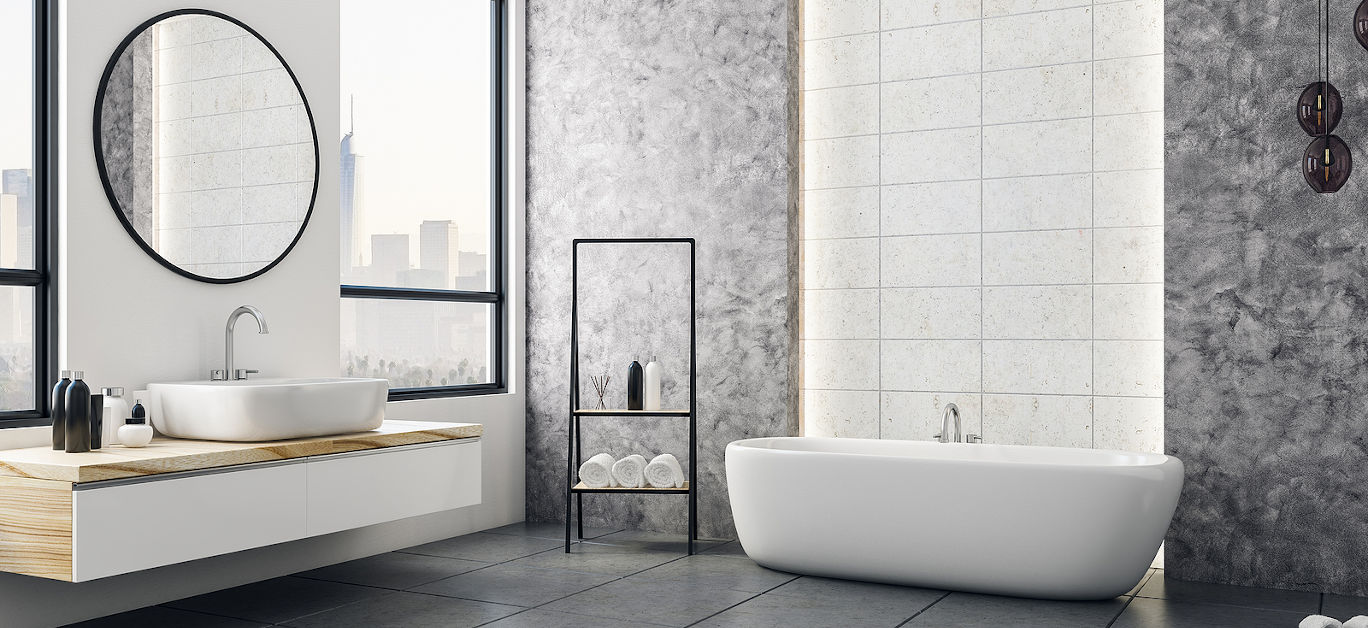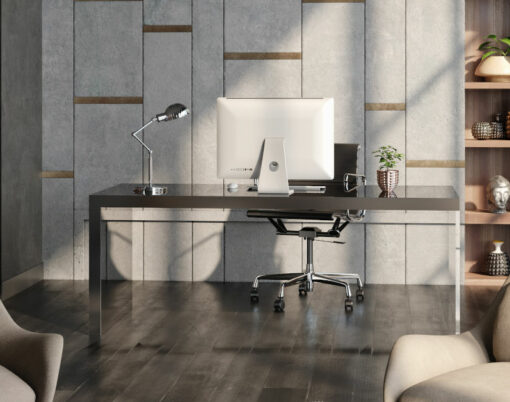Home renovations provide you with the perfect opportunity to put your stamp on the décor, giving you the freedom to start from scratch and create a space that you love spending time in, while also providing a practical space for everyday use.
When it comes to the bathroom, there are often a lot of elements that need to be considered, especially if you’re ripping out an old suite and creating a brand-new space. Although modern self-contained shower cabins have taken showering to a whole new level and have become a popular feature in bathrooms across the country, there’s nothing quite like getting in the bath for a sumptuous soak at the end of a long day.
Of course, there’s the option of installing both items, so you don’t necessarily have to compromise on your dream bathroom, as these days, having a bath is considered luxurious and promotes highly valued ‘me time’ and an effective way to relieve stress in an ever-hectic world.
With this in mind, we have highlighted the kinds of bath you can choose from for your new space along with some ideas about how they could fit into your overall bathroom design and how to style them to create the bathroom of your dreams.
Straight baths
These are the de facto standard in baths and the good news is that they will fit into all but the smallest of bathrooms and with almost all forms of decoration. In fact, if you’re the kind of person who likes to ring in the changes on a regular basis, then the simple and inconspicuous nature of the straight bath could be the perfect blank canvas for you.
Because straight baths are so popular, there is a huge range of accessories for them – you can make your straight bath look upscale with eye-catching taps or opt for a more natural or rustic look by switching to wooden bath panels.
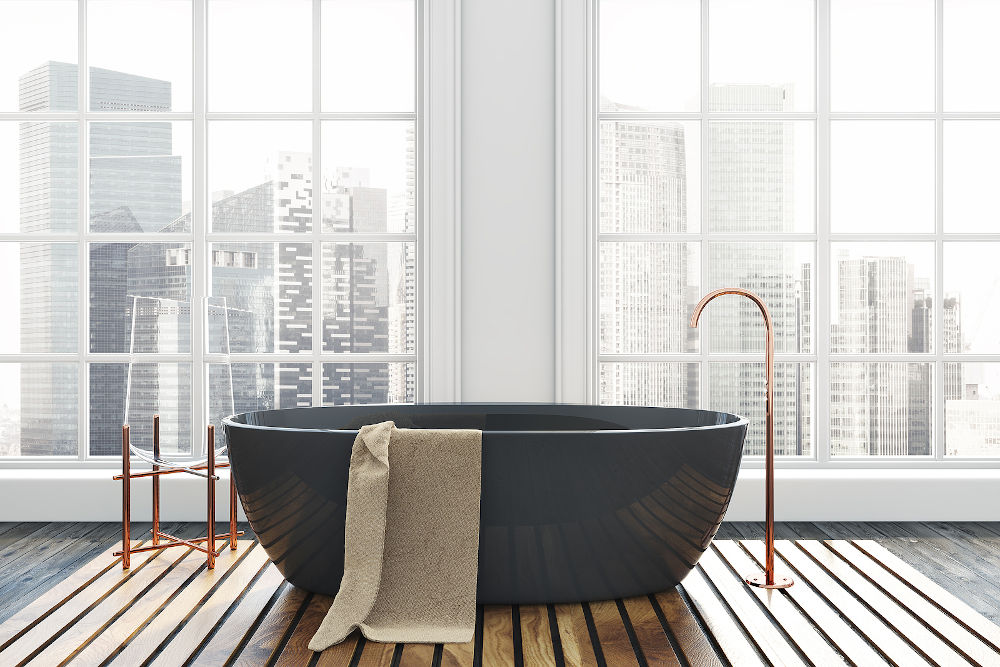
Freestanding baths
A quick look at Pinterest, Instagram or high-end design magazines will show you just how jaw-droppingly stunning freestanding baths can be. If you’re buying a freestanding bath, then it’s almost certainly going to be the focal point of the entire bathroom and that’s most likely what you’re hoping for.
Although freestanding baths still tend to be more associated with traditional interiors, their popularity means that there is an ever-increasing number of contemporary or period-neutral freestanding baths, which may be a better choice if you want to maximize flexibility in your design choices.
When designing a bathroom around a freestanding bath, you’ll need to think about functionality as well as appearance, in particular, you should think about where you’re going to store your toiletries while you’re bathing (freestanding baths don’t have the handy ledges other types of bath do) and also where you’re going to put your towels/clothes to ensure they stay dry as freestanding baths are known for their ability to overflow.
P-shaped baths
P-shaped baths took a while to become appreciated but they’re now steadily gaining ground as they are ideal for many modern bathrooms, where people would really love to have both a bath and a shower but can’t quite find enough space for two separate units. The fact that P-shaped baths were designed to address a modern issue means that they aren’t an ideal choice if you want to create a period bathroom, but if you’re happy to stick within a range of more contemporary styles, then P-shaped baths will fit right in.
When designing a bathroom including a P-shaped bath, you often want to think about balancing the width at one end of the bath, when compared to the other. One easy way to do this would be to place a seat or storage unit with your favourite accessories and necessities like bath salts and soap dispensers at the other end to create symmetry which still leaves plenty of room to get in and out.
It has to be said that P-shaped baths don’t have quite the same range of alternative bath panels as standard baths do, but there is still a decent range from which to choose and you can find a selection at companies like Poshh. They take the same taps and waste fittings as standard baths, so you’ll have plenty of options when choosing those accessories.
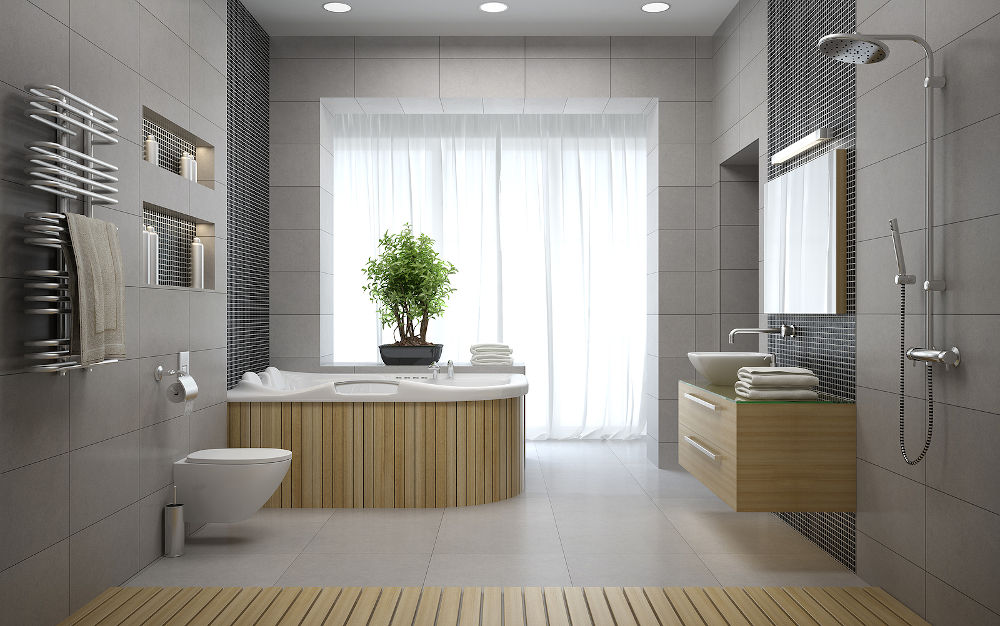
Whirlpool and spa baths
Whirlpool and spa baths are baths you buy because of what they do rather than because of how they look. It’s not that whirlpool and spa baths necessarily look bad, it’s just that they’re built to support a high level of (delightful) functionality and that’s just a fact of life when you invest in one.
Whirlpool and spa baths come in all kinds of shapes and sizes, but the one common factor which unites them is that they all have a fairly modern appearance, so, again, may not be ideal for period bathrooms. Whirlpool and spa baths are just perfect for creating spa-like bathrooms, and they will fit in with pretty much any style other than traditional.
You are unlikely to have the same range of accessories from which to choose as you do with standard baths, but to be honest, we suspect most people’s eyes will light up just at the sight of whirlpool and spa baths, so we’d suggest just treating them similarly to freestanding baths in the sense that they’ll become the star attraction in your bathroom.
Corner baths
Corner baths are ideal for when you really don’t have space for a bath, but still really want one and are often coupled with overhead showers to maximize the use of space. The location of a corner bath is generally non-negotiable, they typically go in the smallest bathrooms where there is only one realistic place for each appliance, so the only remaining question is how to style it.
Given the aforementioned facts, styling corner baths is generally about making the most of the vertical space both visually and practically. If you’re using a corner bath with an overhead shower, then you’ll need a shower curtain, so look for one with vertical stripes or a pattern to draw the eye upwards. If you don’t have a shower, you’ll probably still have tiling which you can use in the same way. Use the vertical space for your bathing/showering necessities too and make them a feature. If they come in stylish packaging, show them off as they are, if not, decant them into stylish bottles you’re proud to display.
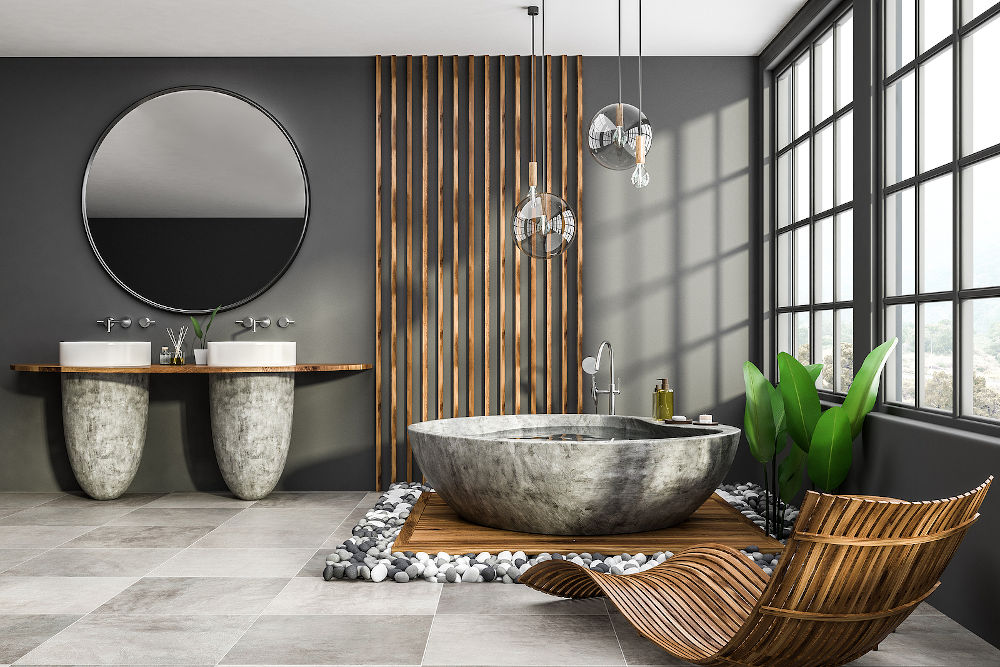
Back to wall baths
Back to wall baths are essentially double ended baths which have only one long side against the wall, with both short sides being in clear floor space, giving the impression of a bath which is almost freestanding. Back to wall baths have several practical advantages over genuinely freestanding baths and in design terms they have the major benefit of being able to use pretty much any and all accessories created for standard baths, giving you a huge range of options.
Just remember that even though back to wall baths have substantially less potential to overflow than truly freestanding baths, they are still a bit more liable to overspill than standard baths, especially when being used by (little) people who love to splash, so think carefully about where you’re going to put anything which needs to stay dry, such as bath robes or towels.
Easy-access walk in tubs
The popularity of easy-access walk in baths has really been on the rise over recent years and even though you can’t yet buy the same range of accessories for them as you can for other types of baths, you do have plenty of options for styling them to create your perfect bathroom.
As well as fitting right in with all modern interior design trends, designers can also play with the fact that modern, easy-access walk in baths closely resemble traditional Japanese soaking tubs, which means that they can be used to create bathrooms with an oriental influence, including spa-style bathrooms, many of which are influenced by the East and its concept of Zen.












